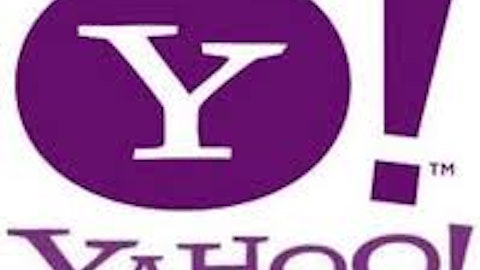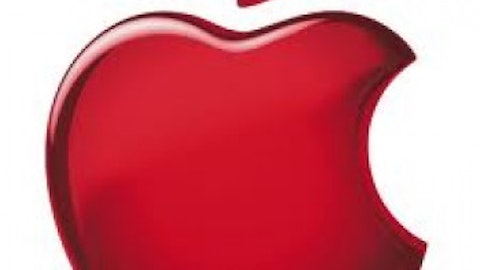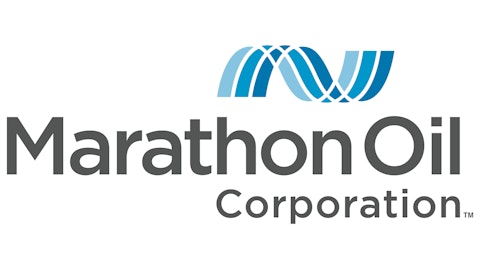The financial crisis ended — at least where the markets are concerned — four years ago. But some people couldn’t believe it was over. On the way back up, they warned that it was a garbage rally — a sucker’s game that would soon take adventurous investors to the poor house. Pundits and analysts pointed to dire financials and warned that soaring speculative selections might soon go the way of the dodo.
Plenty of stocks did go belly-up. But an elite few not only survived, but thrived, producing outsize gains that have made the Dow Jones Industrial Average‘s four-year double look like chump change. Make no mistake: These were some incredibly risky stocks to chase in the dark days of 2009, as you’ll soon see from a few eye-popping then-and-now financial comparisons. Did you listen to the doomsayers and sit on the sidelines, or did you jump in with both feet, not knowing when (if ever) you might touch bottom?

The Dow bottomed out on March 9, 2009 after peaking in October of 2007, and it has since recovered to set fresh all-time highs. In the four years since that day, the index has gained 120%, which increases to 146% if its components’ dividends are added to the calculation. That’s not bad, but it can’t hold a candle to these “garbage stocks” that turned out to be diamonds in the rough. Each has returned at least 1,000% since the end of the financial-crisis crash, and some have recorded far greater gains than that:
| Stock | Total Loss from Peak to Trough (2007-2009) | Market Cap at End of Crash | Total Return Since End of Crash |
|---|---|---|---|
| Fifth Third Bancorp (NASDAQ:FITB) | (96%) | $802.6 million | 1,150% |
| Office Depot Inc (NYSE:ODP) | (97%) | $162.2 million | 600% |
| Krispy Kreme Doughnuts (NYSE:KKD) | (74%) | $74.3 million | 1,240% |
| American International Group (NYSE:AIG) | (99%) | $788.7 million | 575% |
Source: YCharts.
What a wild ride. Let’s see how these companies have performed on a variety of metrics, both before and after the crash, to get a better understanding of why their stocks were so hated then — and why they’ve since proven the doubters wrong.
What happened to Fifth Third Bancorp (NASDAQ:FITB)?
Trailing-12-month earnings per share in 2009: -$3.94
Most recent TTM earnings per share: $1.66
Debt-to-cash ratio in 2009: 5
Most recent debt-to-cash ratio: 2.9
Total return from start of crash to today: -47%
On June 4, 2009, Ben Steverman of Bloomberg Businessweek cited market strategist Doug Peta:
The recent rally “is a necessary consequence after the real beating that equity markets have taken,” Peta says. He notes that Fifth Third Bancorp (NASDAQ:FITB) stock at one point hit $1 per share, a sure sign the bank’s survival was in doubt. But, after the Federal Reserve completed its so-called stress test of major banks, worries about Fifth Third eased and the stock jumped above $8. “Now, [investors believe] Fifth Third is going to survive — the government has said so,” Peta says. “It’s getting to trade on more traditional metrics.”
Fifth Third was in the same boat as many other regional banks coming out of the recession. However, its problems were magnified by the size of its bailout — $3.4 billion, which ultimately resulted in nearly $600 million in profit to the government by the time Fifth Third paid it off in early 2011. Nearly all of Fifth Third’s gain occurred by the end of 2010 and was largely built on a rebound in the bank’s price-to-book ratio. The bank hasn’t done much for shareholders since that time, and its most recent stress test results show that there’s still a way to go before Fifth Third Bancorp (NASDAQ:FITB) is back on a rock-solid foundation.
What happened to Office Depot Inc (NYSE:ODP)?
Trailing-12-month earnings per share in 2009: -$5.42
Most recent TTM earnings per share: -$0.39
Debt-to-cash ratio in 2009: 4.4
Most recent debt-to-cash ratio: 0.7
Total return from start of crash to today: -81%
Ben Steverman had this to say about Office Depot Inc (NYSE:ODP) in the same article:
The market’s rally was led by stocks like Office Depot, up 742%. … For years, Jeremy Grantham, co-founder of investment manager, was a bearish, pessimistic investor, but in early March he suggested stocks could be at their bottom. Like many investors, however, Grantham was surprised by how disproportionately the rally came from low-quality stocks, he said in a recent speech at the Morningstar Investment Conference. “It’s a junk rally,” Grantham said. Rutherford Investment Management president William Rutherford agrees, calling the past three months a “dash to trash.” Rutherford’s funds had stuck with high-quality stocks that he was sure would make it through the financial crisis and recession. As a result, he says, “We missed out on a lot of [the] increase.”
Office Depot Inc (NYSE:ODP) posted all of its gains by the middle of 2010 — despite a 2012 surge, it remains 25% below its value at the start of 2011. The second-string office supply retailer has had difficulties maintaining profitability, and free cash flow has been in decline since 2009 as well. On the plus side, Office Depot’s cash pile is up significantly, and its debt recently dropped by a quarter. A merger agreement with OfficeMax Inc (NYSE:OMX) sent shares spiking last month, but investors remain unsure as to how they should approach this new tie-up.
What happened to Krispy Kreme Doughnuts (NYSE:KKD)?
Trailing-12-month earnings per share in 2009: -$0.06
Most recent TTM earnings per share: $2.23
Debt-to-cash ratio in 2009: 2.1
Most recent debt-to-cash ratio: 0.5
Total return from start of crash to today: 248%
On April 20, 2009, Josh Brown of the Reformed Broker blog wrote:
The final stage of this junkie odyssey is right around now. This is where the manager or trader who was either too much in cash or worse, had too many shorts on, reaches for the real garbage to catch up. We saw the beginning of that this past week as Krispy Kreme Doughnuts (NYSE:KKD), a company that has managed never to do anything right since its IPO eight years ago, ran up 50% in one day on the fantastic news that their creditors would not, in fact, push them into bankruptcy. When you start to see the bankruptcy candidates and 90-cent stocks putting on 40% and 50% moves, you are looking at the equivalent of a drug addict sucking the nitrous gas out of a whipped cream canister, so desperate for that final high that he’ll pretty much try anything at the end of the night.
Yet Krispy Kreme somehow managed to do something right after exiting the crash period. Since the Dow bottomed out in 2009, the donut chain’s debt has been cut in half, its cash pile has more than doubled, and trailing-12-month free cash flow has doubled as well. Some of my Foolish colleagues note that merger mania may be a contributing factor in the stock’s rise, and others point out that future cash flows will be stronger thanks to deferred taxes, which will aid in further trimming debt and boosting cash balances. Krispy Kreme Doughnuts (NYSE:KKD) grew too fast in the past, but its management seems to have chosen a more sustainable path this time.
What happened to AIG?
Trailing-12-month earnings per share in 2009: -$756.85
Most recent TTM earnings per share: $2.04
Debt-to-cash ratio in 2009: 14.8
Most recent debt-to-cash ratio: 42.1
Total return from start of crash to today: 97%
Most of these stocks were singled out by one or two writers, but not AIG. As the recipient of more government bailout money than any other institution in the world, the insurance giant had a massive bull’s-eye on it throughout the recovery:
Insurance giant AIG extended its surprising rally Thursday, rising 26.9 percent amid frenzied speculation along with improved prospects on its ability to repay its massive government bailout. … Analysts at Briefing.com said the gains were a “garbage rally” in the most at-risk financials, “which began late yesterday afternoon with the massive short squeeze in AIG.”-AFP, Aug. 27, 2009.
With AIG enjoying another rally Friday that sent its stock price up 5% to $50.23, Dan Cook, senior analyst with IG Markets in Chicago, said he isn’t sold on the theory that a short squeeze is the driving force behind the advance. … “There is just no way to value this company,” Cook said, “I don’t believe there is anyone in this world who can tell me if this is really a $5.00 stock or a $500.00 stock.” He cited the potential for lingering exposure to holdings like credit default swaps and the unclear valuations of various assets and subsidiaries as concerns that could come back to bite AIG.-Steve Schaefer on Forbes, Aug. 31, 2009.
There are many more examples of disbelief over AIG’s rebound in its first year, and that remains the case four years on. However, after committing more than $180 billion to stabilizing the insurance giant, the federal government has shockingly managed to generate nearly $18 billion in profit from its efforts. AIG is now no longer owned by Uncle Sam, which sold its stake late last year, and its debts have plummeted — though, unfortunately, that has come at the expense of what was once a formidable cash hoard. This isn’t your daddy’s AIG, but it’s not your government’s AIG, either. It’s a company in transition. Thus far, that transition has been managed well, which has vindicated early buyers, but there’s still a long way to go before AIG reclaims its pre-crash standing.
The article 4 Stock Success Stories From the 2009 “Sucker’s Rally” originally appeared on Fool.com and is written by Alex Planes
Fool contributor Alex Planes holds no financial position in any company mentioned here. Add him on Google+ or follow him on Twitter @TMFBiggles for more insight into markets, history, and technology.The Motley Fool recommends American International Group. The Motley Fool owns shares of American International Group and Fifth Third Bancorp and has the following options: Long Jan 2014 $25 Calls on American International Group.
Copyright © 1995 – 2013 The Motley Fool, LLC. All rights reserved. The Motley Fool has a disclosure policy.




